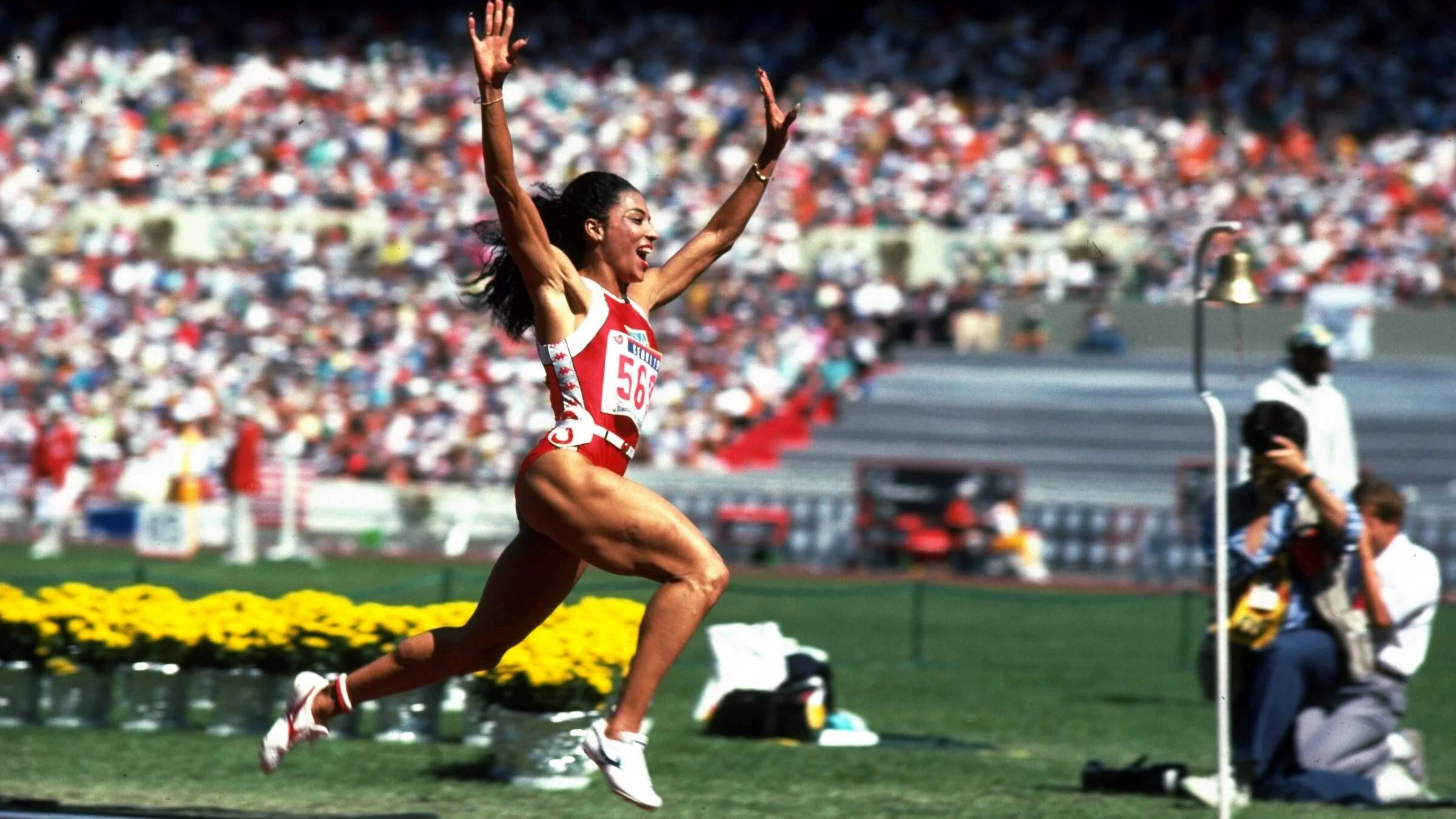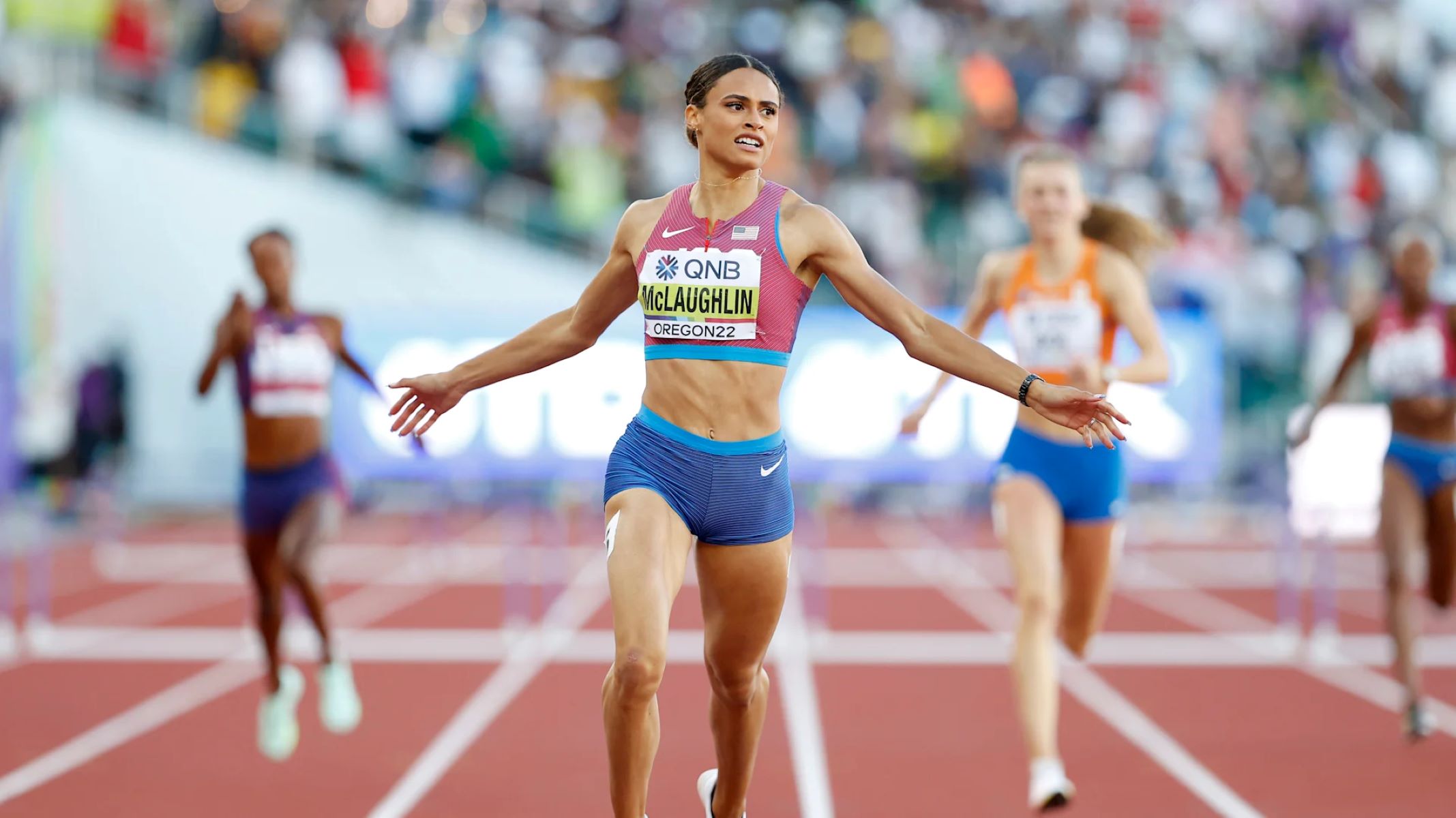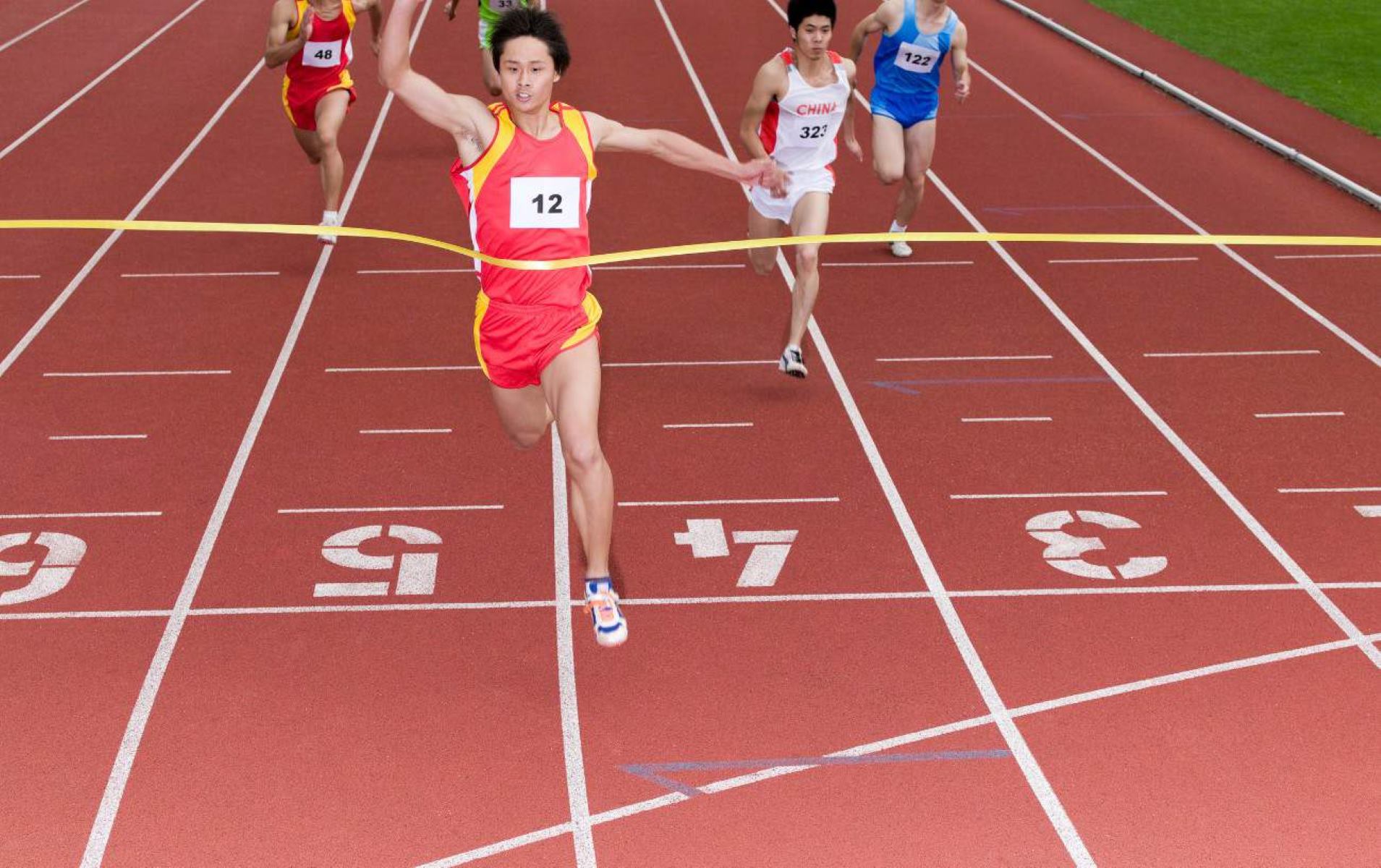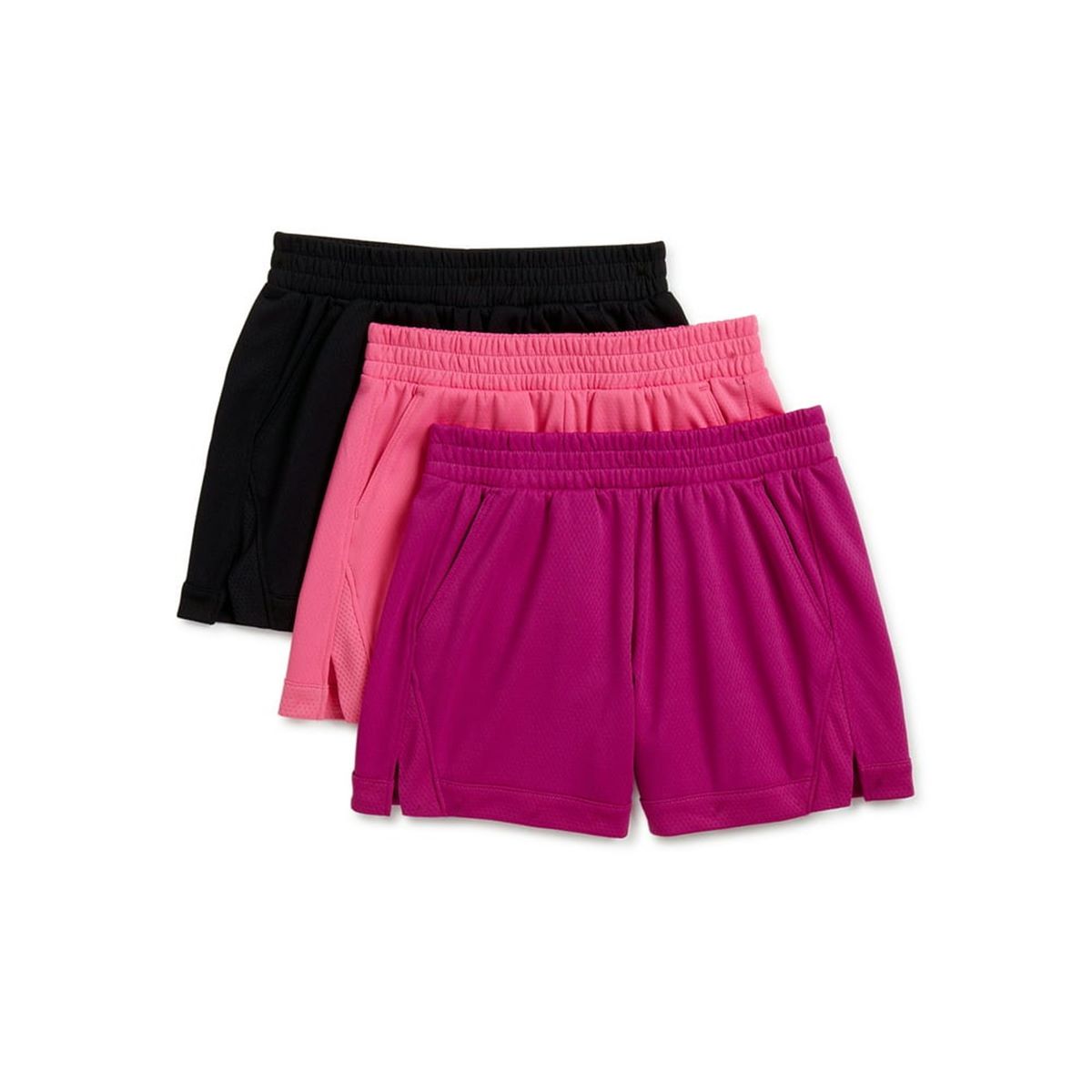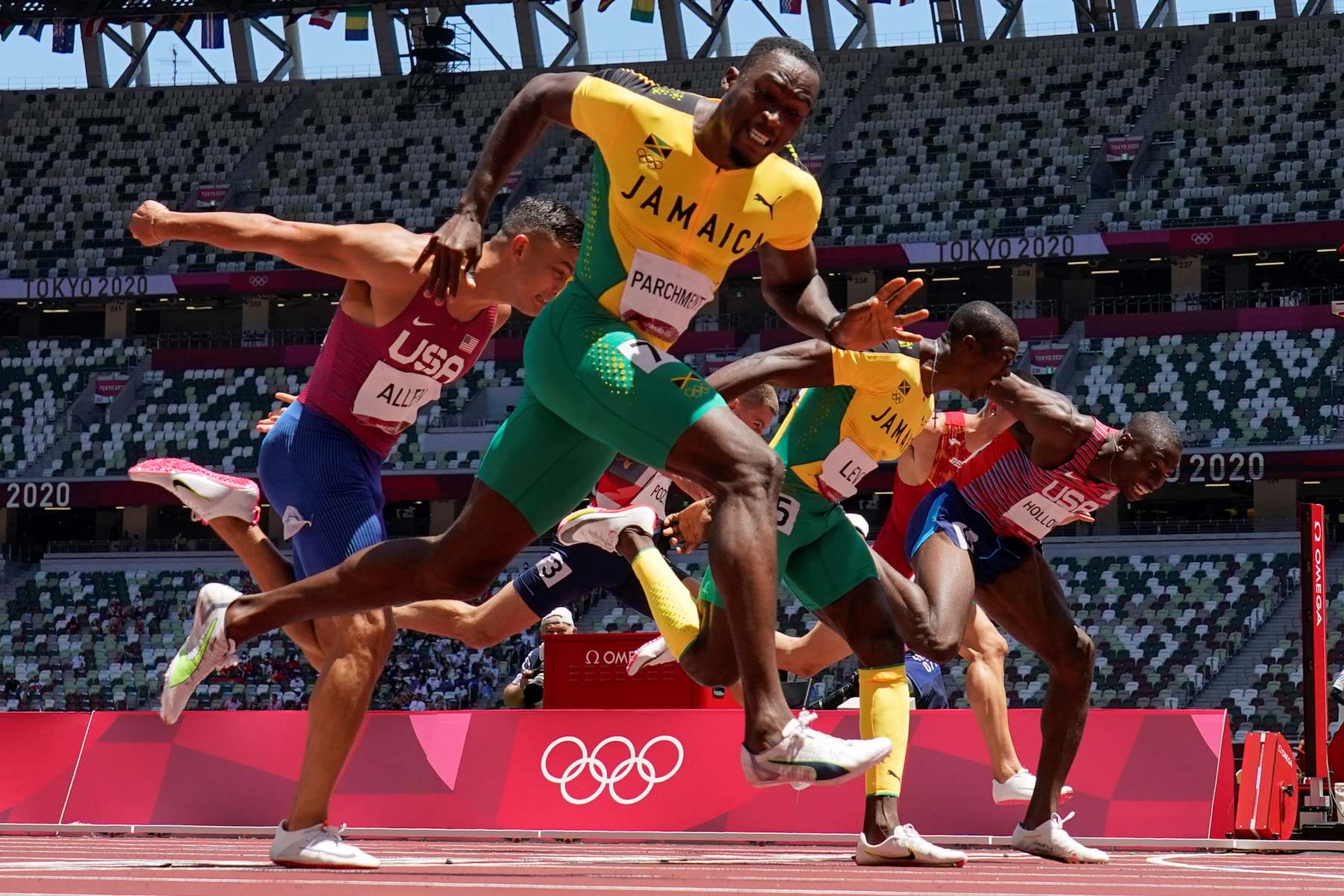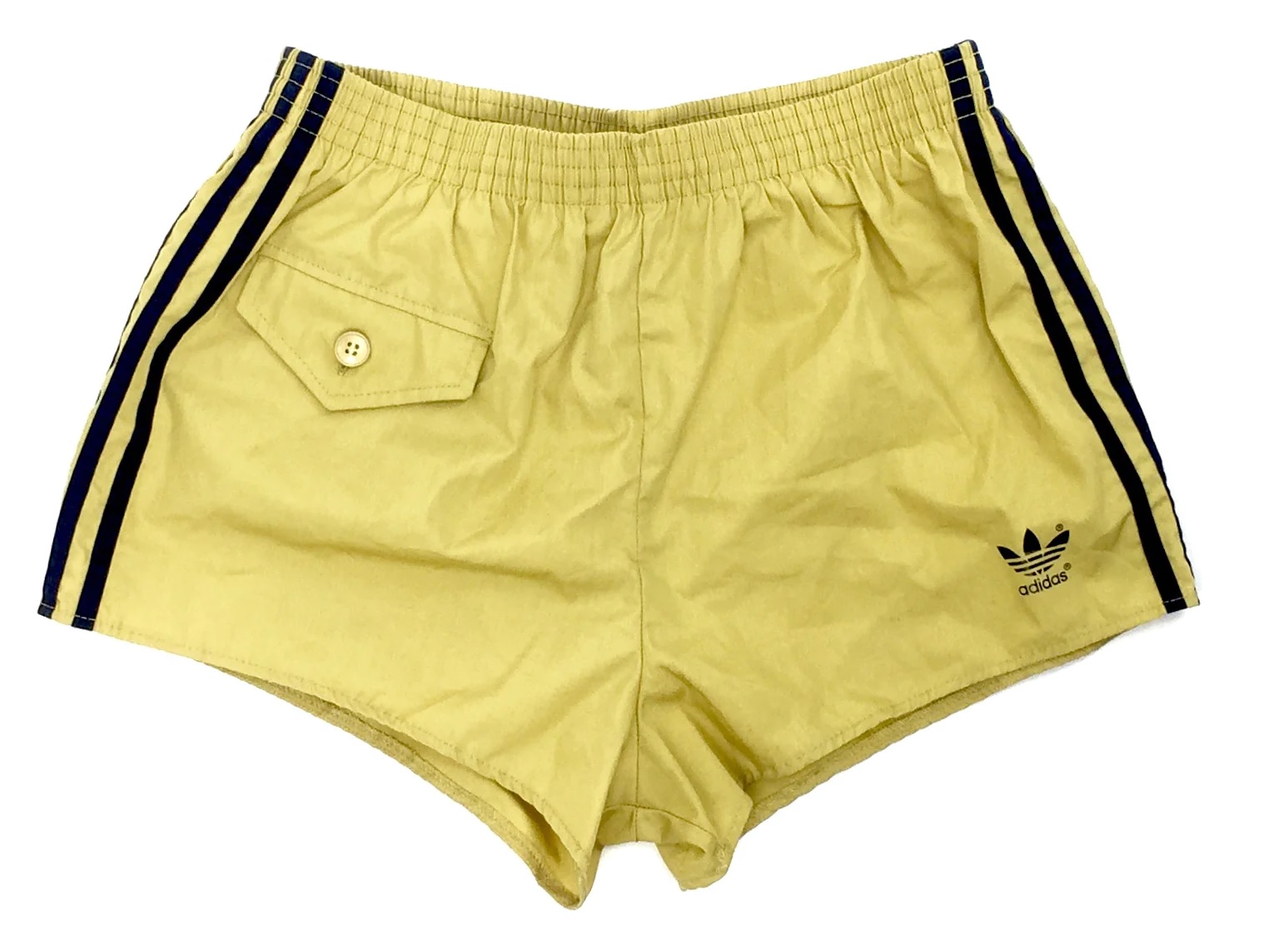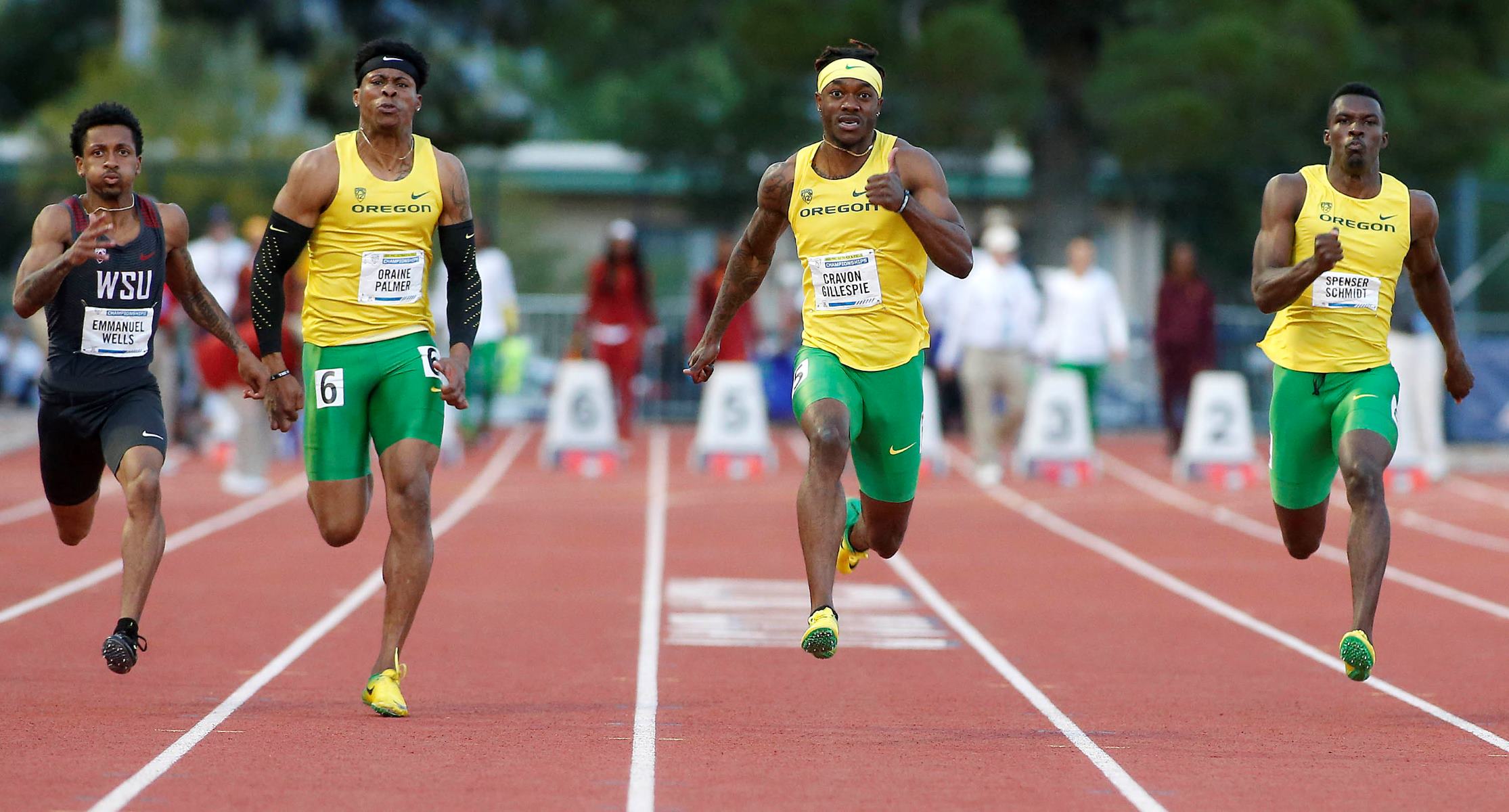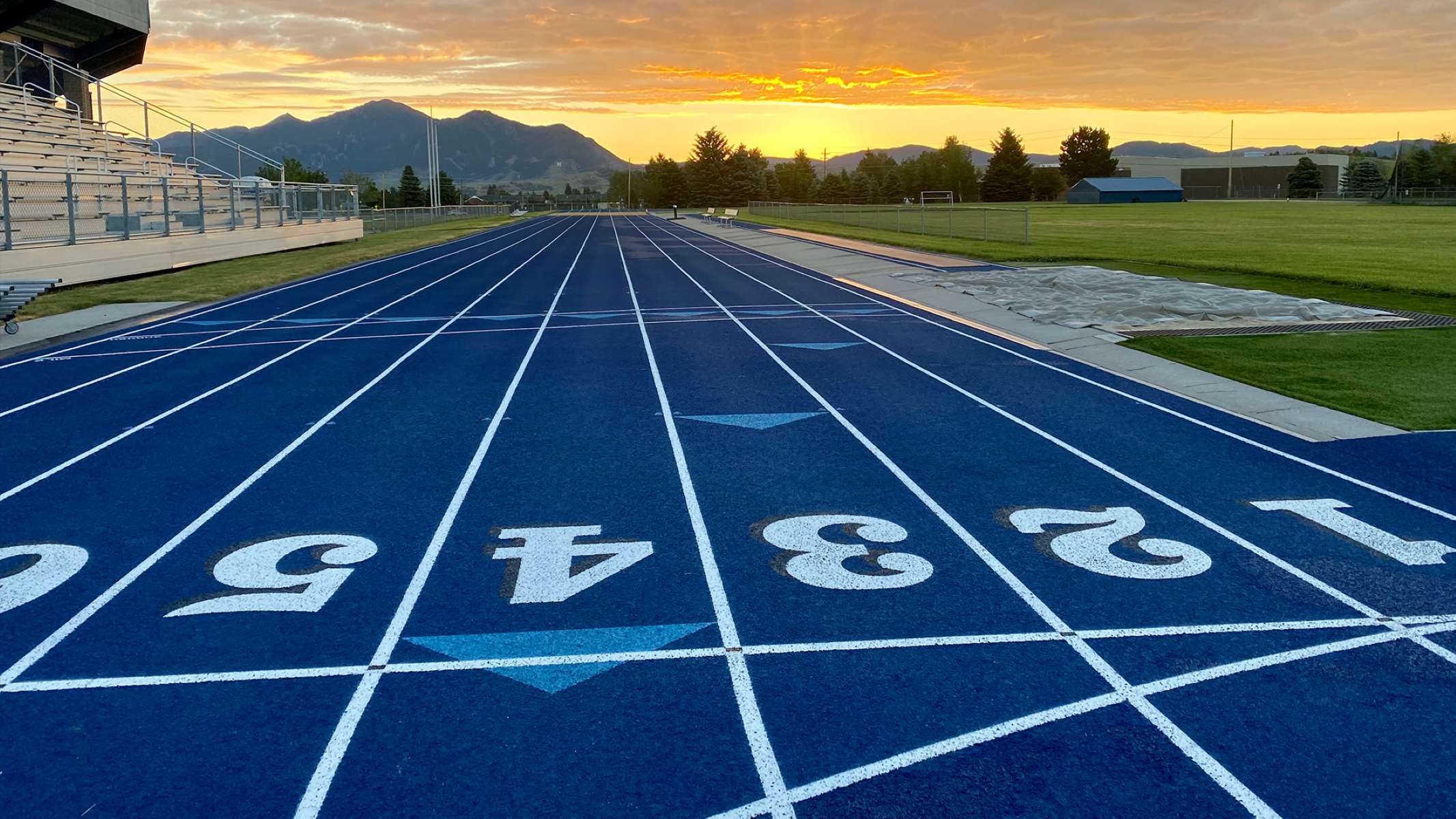

Featured
What Does SCR Mean In Track And Field
Published: September 5, 2023
Learn what SCR means in track and field and discover its significance. This featured article explores the definition and role of SCR in the sport.
Introduction
Track and field is a sport that captivates both athletes and spectators alike. It is a showcase of speed, endurance, strength, and agility, where competitors push their limits to achieve greatness.
One crucial aspect of track and field events is the measurement of performance. It is essential to accurately determine the distance covered or the height cleared by an athlete to establish fair competition and record-breaking achievements. In this realm, the measurement system known as SCR, or Synthetic Control Ruler, plays a significant role.
SCR is an innovative measuring technique that has revolutionized track and field events, providing precise and reliable measurements. It is a system based on high-tech synthetic materials that ensure accuracy and consistency in measuring distances, heights, and other vital aspects of the sport. The integration of SCR has brought about numerous benefits to both athletes and the sport as a whole.
In this article, we will explore the origins of SCR, the rules and regulations surrounding its usage, and how it has been implemented in various track and field events. We will also discuss the benefits and limitations of SCR, comparing it with other measuring systems. Additionally, we will delve into notable performances and records achieved using SCR, showcasing its impact on the sport.
By the end of this article, you will have a comprehensive understanding of the significance of SCR in track and field events, and why it has become an integral part of the sport.
Definition of SCR
Before diving into the intricacies of SCR in track and field, it is important to establish a clear understanding of what SCR stands for and how it is defined. SCR, or Synthetic Control Ruler, is a measuring system designed to accurately determine distances, heights, and other relevant parameters in track and field events.
The term “Synthetic” refers to the materials used in the construction of the ruler. Unlike traditional measuring instruments, SCR is made from synthetic materials that offer superior precision, durability, and consistency. These advanced materials ensure that measurements remain accurate throughout the event, even under various environmental conditions.
Control refers to the strict adherence to standardized procedures and regulations when using SCR. It ensures that the measurements obtained are fair, consistent, and comparable across different competitions and venues. SCR provides a controlled environment that eliminates potential inconsistencies or biases that may occur with manual measurement techniques.
The ruler aspect of SCR refers to the long, flat, and flexible strip that is used to measure the distance or height achieved by an athlete. It is marked with precise measurements, allowing for accurate readings to be taken. The ruler is typically made from a synthetic material that is resistant to damage from factors such as moisture, heat, and bending, ensuring its longevity and reliability.
Overall, SCR encompasses not only the ruler itself but also the methods, standards, and technologies involved in accurate measurement within track and field events. It is a comprehensive system that has evolved to enhance the fairness, accuracy, and progress of the sport.
Origins of SCR in Track and Field
The integration of SCR into track and field can be traced back to the need for more accurate and reliable measurements. In the early days of the sport, measurements were often taken using manual techniques such as measuring tapes or wooden rulers. Although efforts were made to ensure accuracy, there were inherent limitations and inconsistencies in these methods.
The concept of using synthetic materials for measuring purposes was introduced in the mid-20th century. Scientists and engineers recognized the potential of synthetic materials to provide more accurate and consistent measurements in various fields, including track and field. This realization led to the development of the Synthetic Control Ruler (SCR) specifically for the sport.
The origins of SCR in track and field closely parallel advancements in materials science and technology. With the advent of synthetic materials like composite polymers and high-density plastics, measuring instruments could be designed to withstand extreme conditions while maintaining accuracy. These materials offered superior durability and precision compared to traditional tools.
During the late 20th century, SCR was gradually introduced into professional track and field events as a replacement for conventional measuring methods. National and international governing bodies recognized the potential of SCR to standardize and improve measurement accuracy across the sport. The use of SCR soon became widespread, and it is now regarded as the gold standard in track and field measurement.
The development and implementation of SCR in track and field have paved the way for more consistent and reliable measurement practices. Athletes can now trust that their performance will be assessed accurately, removing the reliance on subjective judgments and reducing the margin for error. This evolution has enhanced the credibility and integrity of track and field events, as well as the sport as a whole.
Rules and Regulations of SCR
SCR is accompanied by a set of rules and regulations to ensure standardized measurements and fair competition in track and field events. These guidelines are set forth by governing bodies such as the International Association of Athletics Federations (IAAF) and are followed at all levels of the sport.
One of the fundamental rules of using SCR is the proper calibration and certification of the ruler. Before each competition, the SCR must undergo rigorous testing and calibration to ensure its accuracy. This process involves comparing the ruler’s markings to a certified standard and making any necessary adjustments.
Additionally, the ruler should be placed and anchored securely to prevent any movement during the event. It is usually positioned parallel to the ground and perpendicular to the direction of the athlete’s movement to obtain accurate readings.
When it comes to recording measurements, specific guidelines are followed. For distances, the measurement is taken from the edge of the landing area or take-off point to the closest point of contact made by the athlete. This ensures consistent and uniform measurement across different events and athletes.
In the case of height measurements, the ruler is positioned vertically, and the athlete’s height is measured from the highest point of their body that successfully clears the bar. Again, this standardizes the measurement process and eliminates any potential biases.
It is important to note that the measurements obtained using SCR are typically rounded down to the nearest centimeter or inch to ensure fairness. This avoids disputes over minimal differences and allows for consistent comparison and record keeping.
Furthermore, SCR regulations require proper maintenance and storage of the ruler to preserve its integrity and accuracy. The ruler should be protected from extreme weather conditions, excessive bending, and any other factors that may affect its performance.
By following these rules and regulations, athletes, officials, and spectators can have confidence in the accuracy and fairness of track and field events. SCR plays a pivotal role in ensuring consistency and standardization, allowing athletes to showcase their skills on a level playing field.
Implementing SCR in Track and Field Events
The implementation of Synthetic Control Ruler (SCR) in track and field events involves various steps and considerations to ensure accurate measurements and a seamless competition experience. Here’s a closer look at how SCR is integrated into different events and the impact it has on the sport.
In sprint events, SCR is used to measure the distance covered by athletes. Starting blocks are equipped with embedded rulers, allowing for precise measurement from the start to the finish line. This technology ensures that race times are accurately recorded, enabling fair competition and the determination of new records.
For long jump and triple jump events, SCR is placed along the landing area to determine the exact distance covered by the athlete. This eliminates the need for manual tape measurements and provides instant results. By using SCR, officials can efficiently assess performances and identify record-breaking jumps with utmost accuracy.
In high jump and pole vault events, SCR is positioned vertically to measure the height achieved by athletes. The ruler helps determine whether the bar has been successfully cleared or knocked down. This ensures transparency in determining the winner and recording new records in these technical events.
Implementing SCR in throwing events, such as shot put, discus, and javelin, involves measuring distance rather than height. Each throwing sector features SCR embedded within it, allowing for accurate distance measurements. This eliminates the need for manual tape measurements and reduces human error, enhancing the reliability of the results.
In relay races, SCR is used for accurate baton changeovers. The designated exchange zones are marked with embedded rulers, ensuring that the baton is passed within the legal zone. This not only enhances fairness but also helps prevent disqualifications due to improper handoffs.
The integration of SCR in track and field events has revolutionized the sport by providing consistent and reliable measurements. Officials, athletes, and spectators can rely on SCR to deliver immediate and accurate results, eliminating uncertainties and controversies surrounding measurement techniques. This technology has not only elevated the level of competition but has also enhanced the overall experience of athletes and fans.
As technology continues to advance, there is a potential for further integration of SCR, such as incorporating it into electronic timing systems or wearable devices. This could further streamline the measurement process and provide additional data for athletes and coaches to analyze and improve performance.
Benefits and Limitations of SCR
Synthetic Control Ruler (SCR) has brought about numerous benefits to the world of track and field, revolutionizing the way measurements are taken and enhancing the overall experience for athletes and spectators. However, like any technology, SCR also has its limitations. Let’s explore the advantages and drawbacks of implementing SCR in track and field events.
One of the primary benefits of SCR is its superior accuracy compared to traditional measuring methods. The ruler’s precise markings and high-tech materials ensure minimal margin for error, providing athletes with fair and consistent measurements. This accuracy not only helps determine winners but also allows for the recognition of new records and achievements.
SCR also offers efficiency and instant results. The integration of this measuring system enables officials to quickly and accurately assess performances, allowing competitions to run smoothly. Immediate feedback is crucial for athletes to evaluate their performance and make necessary adjustments for future attempts.
Another advantage of SCR is its durability and resistance to environmental factors. The synthetic materials used in the ruler are designed to withstand various conditions such as moisture, heat, and bending. This ensures that measurements remain reliable and consistent, regardless of the weather or venue.
Moreover, the use of SCR mitigates potential biases and disputes that may arise with manual measuring techniques. By providing standardized measurements, SCR eliminates subjective interpretations and creates a level playing field for athletes competing against one another. This adds to the fairness and integrity of the sport.
While the benefits of SCR are significant, it’s important to consider its limitations as well. One limitation is the initial cost associated with implementing SCR in track and field events. The advanced materials and technology used in the ruler can be expensive to produce and maintain, which may pose financial challenges for smaller competitions or organizations.
Another limitation is the reliance on proper calibration and maintenance. SCR requires regular testing and adjustments to ensure accurate measurements. Failure to properly calibrate or maintain the ruler can result in compromised results and undermine the credibility of the sport. Therefore, attention to detail and adherence to maintenance protocols are crucial.
Additionally, the use of SCR assumes a certain level of infrastructure and equipment availability. Smaller or less developed sporting facilities may not have the necessary resources to adopt this advanced measuring system. This can create disparities in measurement accuracy between different venues and competitions.
Overall, the benefits of SCR outweigh its limitations. Its accuracy, efficiency, and fairness have elevated the standards of track and field events. As technology continues to evolve, efforts should be made to address the limitations and ensure that SCR remains accessible and affordable for all levels of competition.
Comparison with Other Measuring Systems
Synthetic Control Ruler (SCR) has emerged as a game-changer in track and field measurements, offering advantages over traditional measuring systems. Let’s compare SCR with other measuring systems commonly used in track and field events to understand its superiority.
One commonly used alternative to SCR is the traditional measuring tape. While measuring tapes have been a staple in the sport for many years, they are prone to human error and variable tension. Inaccurate readings can occur due to tape bending or stretching, leading to inconsistencies and disputes. In contrast, SCR provides precise and consistent measurements, minimizing the margin for error.
An alternative to measuring tapes is laser measuring systems. Laser systems offer speed and non-contact measurement, making them suitable for certain events. However, they can be affected by environmental factors such as humidity or dust, leading to inaccuracies. SCR, on the other hand, is not impacted by external conditions and provides reliable measurements regardless of the surroundings.
Another measuring system used in some field events is the pivot board. It involves athletes using a pivot point on the take-off board to measure their distance. Although the pivot board provides an immediate measurement, it can be susceptible to inaccuracies caused by inconsistent technique or improper alignment. SCR eliminates these issues by providing a standardized and objective measurement process.
Compared to all these alternatives, SCR stands out for its superior accuracy, reliability, and fairness. Through its use of high-tech synthetic materials, SCR eliminates human errors and provides consistent measurements across different events and venues. This ensures fair competition and reliable records, giving athletes confidence in their performances.
In addition to accuracy, SCR offers efficiency and convenience. Unlike other measuring systems that may require significant setup or adjustments, SCR is ready for immediate use. Its lightweight and durable construction make it easy to handle and transport between events, contributing to streamlined competitions.
Furthermore, SCR’s integration into electronic timing systems allows for seamless integration of distance and time measurements. This synchronization provides comprehensive and instant results, giving athletes and spectators real-time insights into performance.
While other measuring systems may have their merits in specific contexts, SCR has emerged as the preferred choice in track and field due to its reliable and standardized measurements. Its accuracy, efficiency, and fairness have solidified its position as the gold standard in the sport.
Notable Performances and Records Using SCR
The implementation of Synthetic Control Ruler (SCR) in track and field has witnessed numerous remarkable performances and record-breaking achievements. Let’s explore some of the notable moments that have been made possible through the precision and reliability of SCR.
One of the most iconic moments in track and field history was Usain Bolt’s world record-breaking performance in the 100-meter sprint in 2009. Using SCR, Bolt clocked a staggering time of 9.58 seconds, surpassing his own previous record. This achievement showcased the incredible speed and athleticism that Bolt possessed, as well as the accuracy of SCR in capturing his remarkable feat.
In field events, records have been shattered thanks to SCR’s standardized measurements. One notable performance was Mike Powell’s long jump record at the 1991 World Championships. Powell leaped an astonishing distance of 8.95 meters, eclipsing the previous record that had stood for over two decades. The precise measurements provided by SCR ensured that Powell’s exceptional jump was accurately recognized and entered into the record books.
The pole vault event has seen outstanding performances using SCR. Renaud Lavillenie’s world record-breaking jump of 6.16 meters in 2014 was a remarkable feat. SCR played a crucial role in accurately measuring the height achieved by Lavillenie, solidifying his place in history as the highest pole vaulter of all time.
Distance running events have also witnessed notable performances facilitated by SCR. Eliud Kipchoge’s incredible sub-two-hour marathon, achieved during the INEOS 1:59 Challenge in 2019, demonstrated the limits of human endurance. Scrutinized by SCR, Kipchoge’s world-record time of 1:59:40 inspired the running community worldwide and showcased the precision of SCR in accurately capturing his groundbreaking achievement.
Furthermore, SCR has provided fair and accurate measurements in various team events, including relay races. Notable performances in relay races, such as the Jamaican men’s 4×100-meter relay team’s world record at the 2012 Olympics, are a testament to the reliability of SCR. The precise measurements ensured that each baton exchange and the overall race time were accurately captured, allowing for fair competition and the recognition of new records.
SCR’s contribution to track and field is not limited to record-breaking moments. It has provided a platform for athletes to challenge their own limits, push the boundaries of human potential, and strive for greatness. It is through the precise and consistent measurements enabled by SCR that these performances and records have been made possible, cementing SCR’s place as an invaluable tool in the sport.
Conclusion
The integration of Synthetic Control Ruler (SCR) in track and field has transformed the way measurements are taken, revolutionizing the sport. SCR’s high-tech materials, precision markings, and standardized procedures have led to accurate, reliable, and fair measurements in various events.
From sprint races to field events, SCR ensures that athletes are assessed on a level playing field, free from subjective interpretations or biases. The elimination of human error and the use of advanced synthetic materials have enhanced the accuracy and consistency of measurements, allowing for the recognition of remarkable performances and the breaking of records.
The benefits of SCR are manifold. Its superior accuracy provides athletes with confidence in their performances, giving them tangible proof of their accomplishments. SCR’s efficiency and instant results contribute to smooth and streamlined competitions, allowing for immediate analysis and adjustments. Additionally, the durability and resistance of SCR to environmental factors ensure reliability and consistency across different venues and events.
While SCR has its limitations, such as initial costs and maintenance requirements, the overall impact it has had on the sport of track and field cannot be understated. It has elevated the standards of measurement, enhancing the credibility and integrity of competitions at all levels.
As technology continues to advance, further developments and innovations in measuring systems are anticipated. However, it is clear that SCR has set a benchmark for accuracy and reliability in track and field. Its contributions to the sport, from enabling record-breaking performances to ensuring fair competition, have solidified its place as an essential tool for athletes, officials, and fans alike.
In conclusion, the implementation of SCR has reshaped the world of track and field, providing athletes with precise and standardized measurements and creating a more transparent and competitive environment. With SCR as the gold standard in measuring systems, the sport will continue to evolve, push boundaries, and inspire future generations of track and field athletes.
